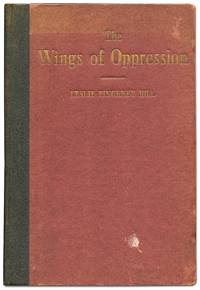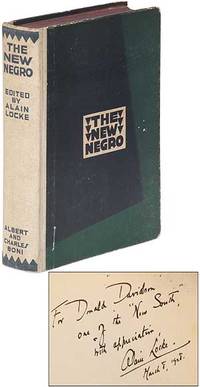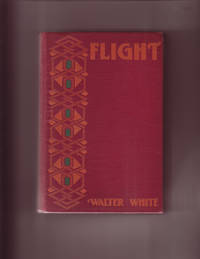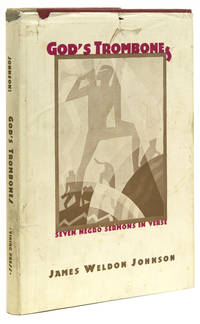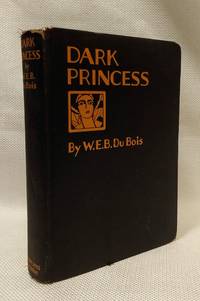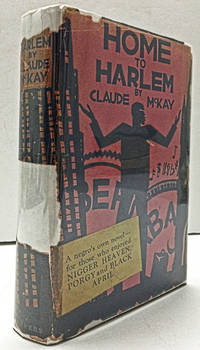African American Literature 1920-1929
-
Rachel by Angelina W. Grimke
This is one of the first plays to protest lynching and it is generally accepted as the first play published and produced by an African American woman. Originally titled Blessed are the Barren, this three-act play depicts an educated young woman whose sensibilities are overcome by the realities of racism in America.
Rachel Loving cares deeply for children and wants to have her own until the horrors and dangers of racism change her mind and make her essentially give up on love. The play was first performed at the Myrtilla Miner Normal School in Washington, D.C. in 1916 and it was published in 1920 by The Cornhill Company, Boston.
The playwright, Angelina Weld Grimke, was born in 1880. She was the Great-Niece of the famous Grimke sisters, who were white abolitionists from a wealthy slave-owning family in Charleston, South Carolina. In addition to writing plays, Angelina W. Grimke was a teacher, a journalist, and a poet.
-
The Wings of Oppression by Leslie Pinckney Hill
The Wings of Oppression was the first and only book of poetry written by the important African-American educator Leslie Pinckney Hill.
The book was published in 1921 by the Stratford Company in Boston. Hill attended Harvard from 1899 to 1904, receiving his Master’s Degree in education before teaching at Tuskeegee and other institutions.
-
The Vengeance of the Gods by William Pickens
The Vengeance of the Gods is a scarce collection of short stories published in 1922 by The A.M.E. Book Concern in Philadelphia. Author William Pickens was born in 1881 in South Carolina and received bachelor’s degrees from Talledega and Yale University, as well as a master’s degree from Fisk. He was active in the NAACP. Pickens published multiple books, including The Heir of Slaves (1911) and Bursting Bonds (1923), both of which deal with actual race-motivated attacks on African Americans in American history. -
Cane by Jean Toomer
Now considered a classic and the first novel of the Harlem Renaissance, Cane was first published by Boni and Liveright in 1923 and sold just 500 copies.
Cane practically disappeared until it was rediscovered in the 1960s, two years after the author's death. Considered ‘High Modernist’ the novel is composed of vignettes including narrative prose, poetry, and dialogue moving in a circular fashion to combine life experiences of Black people in the rural south and urban north.
-
There is Confusion by Jessie Fauset
First published by Bon and Liveright, New York, in 1924, Jessie Redmon Fauset's There Is Confusion is considered the first work of fiction to positively portray an educated black middle class working toward prosperity within a racially mixed society.
Using the traditional conventions of the 'novel of manners,' Fauset's work advanced themes of racial uplift, patriotism, optimism for the future, and Black solidarity. The main characters are three children each pursuing their dreams, portraying ambition, love, and the struggle for equality.
Jessie Redmon Fauset, one of the first female African-American graduates of Cornell, was a very influential critic and the most prolific novelist of the Harlem Renaissance. She was the literary editor of The Crisis, a far-reaching and influential magazine put out by the NAACP.
-
The New Negro by Alain Locke
The New Negro: An Interpretation is an anthology of fiction, poetry, and essays on African and African-American art and literature edited by Alain Locke. Locke was an American writer, philosopher, educator, and patron of the arts who taught at Howard University and is considered the "Dean of the Harlem Renaissance.’" The New Negro is illustrated with over 25 color and black-and-white plates by Winold Reiss, Aaron Douglas, and Miguel Covarrubias. Considered the "Bible of the Harlem Renaissance" the anthology features major works by Zora Neale Hurston, Langston Hughes, Countee Cullen, Claude McKay, Jean Toomer, and other major writers and artists of the time.
The first edition of The New Negro was published by Albert and Charles Boni, New York, in 1925.
-
Flight by Walter White
Flight, by Walter White, is a novel about Mimi Daquin, a light-complexioned African-American woman who takes on the identity of a white woman in New York City to leave her difficult past behind. Although she is met with success in her new life, she feels something missing. First published by Alfred A. Knopf in 1926, Flight is considered a groundbreaking novel of the Harlem Renaissance and a major text in the literature of ‘passing.’
-
God's Trombones by James Wheldon Johnson
God's Trombones by James Wheldon Johnson is a collection of inspirational sermons reimagined as poetry, reverberating with the musicality and splendid eloquence of the spirituals. First published by Viking Press, New York in 1927, the cover art and illustrations were by celebrated Harlem Renaissance artist Aaron Douglas. Johnson’s first success as an author was his poem "Lift Ev'ry Voice and Sing" (1899) which is often called the "Black National Anthem" of the United States. God's Trombones: Seven Negro Sermons in Verse is considered one of Wheldon's most important works, along with his novel Autobiography of an Ex-Colored Man (1912).
-
Dark Princess by W.E.B. Du Bois
First published by Harcourt, Brace and Company in 1928, The Dark Princess: A Romance was one of five novels written by the famous African American writer, teacher, sociologist, and activist W.E.B. Du Bois. Du Bois described this novel as one of his favorite works. Dark Princess explores the beauty of people of color throughout the world. It tells the story of an African-American doctor falling in love with an Indian Princess against a backdrop of radical politics and the quest for racial justice.
-
Home to Harlem by Claude McKay
Home to Harlem was the first best-seller by an African-American. First printed by Harper and Brothers in 1928, the novel quickly went to subsequent printings. It tells the story of Jack Brown, a black soldier who deserts the Great War in France and returns to Home to Harlem in the novel. The city’s nightlife is full of temptation for Brown, but the grit, grime and hardness of the industrial city are pitted against the idealism of rural life. Characters live within the frustration of intellectual potential and aspiration that is limited by prejudiced circumstances. Author Claude McKay was criticized for depicting stereotypes of lower-class blacks in the novel, while others celebrated what they considered realistic views of Harlem in the 1920s.
-
Blacker the Berry by Wallace Thurman
Author Wallace Thurman’s first published novel and best-known work, The Blacker the Berry: A Novel of Negro Life was first published by the Macaulay Company, New York, in 1929. The book depicts life in Harlem while highlighting prejudices within the black community based on skin color. Wallace published just two more novels, Infants of Spring (1932), and co-authored The Interne (also 1932) with Abraham L. Furman. Thurman died at the age of 32 of tuberculosis.
Subscribe
Sign up for our newsletter and receive coupons via email.

Author Bio: Amy C. Manikowski is a writer, bookseller, trail-diverger, history buff, and pitbull lover. She graduated from Chatham University with an MFA a while ago, and after wandering aimlessly settled in Asheville NC.

